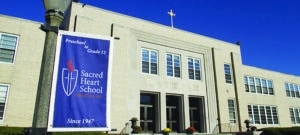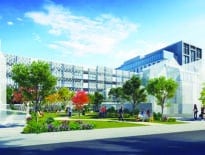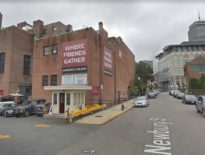With the development of new teaching methods, constantly evolving technology and the need for increased security measures, the school building of today is far different from the historic brick edifices of yesteryear.
The design of a new or revamped school facility is now based on the needs of students. No longer is a school simply a building that houses students. Educators and administrators are now fully of the importance of environment and its impact on the learning process.
Curriculum may be the foundation of a good education, but effective architecture also plays a large role in the learning process. Here is where the integration of well-lit spaces, natural lighting, technology infrastructure and resource centers come into play.
Private Versus Public
While all schools have the same basic goal – to educate the next generations in an atmosphere that encourages learning and the development of the human spirit – designing a private school differs from designing a public school.
In the private school sector, where enrollment among schools is highly competitive, the importance of innovative design cannot be overstated, nor can the need to design for the long term rather than immediate needs. Architecture must support the needs of private schools while maintaining cost control. But what must not be lost in the equation is the creation of an atmosphere that provides students with a sense of ownership and belonging.
Over recent years, Sacred Heart School has heeded this call to action with the construction of several state-of-the-art annexes. The school opened a new Science and Innovation Center in 2015, a $2 million renovation that reflects the school’s commitment to its STEAM (science, technology, engineering, arts and mathematics) initiative. The center includes a biology lab and fully functioning greenhouse, a physics lab, a robotics lab, a physical science lab, an earth and space sciences lab, an updated chemistry lab along with a preparatory room with sterilization and refrigeration equipment and an expanded computer science lab to offer in-depth computer skills lessons.
The center creates an environment that allows students to seamlessly move from high school into a university program. It also reflects the school’s commitment to providing today’s and tomorrow’s students with resources important to their futures. Two years ago, thanks to the generosity of the estate of an alumna, Sacred Heart completed significant upgrades to its Speech & Debate Center. Enhancements included a revamp of the existing center’s class/research/practice room to better accommodate the program’s needs.
Sacred Heart and many other private schools recognize the importance of debate in terms of learning and listening skills and consider a space devoted to this discipline compulsory. Studies indicate schools that incorporate debate within their curriculum are readying students for “the real world,” one where critical thinking, compromise and the ability to view things through someone else’s eyes is vital. Sacred Heart was recently recognized as a National Speech and Debate Tournament winner which they participate in each year.
Schools Have Community Role, Too
To help meet financial ends, some private schools welcome opportunities to share their facilities with the community. Athletic fields, gymnasiums, observatory, auditoriums, cafeterias and classrooms are often available at affordable rates. Inasmuch, when designing a private school facility, its availability to the community at large must be a consideration.
The tragedies at schools and universities throughout the country are a heartbreaking reminder of the importance of safety and security. The way in which a building is laid out or how a security program is organized has the biggest impact on the safety and security of its occupants. It’s a sad commentary that active security systems, such as motion detectors or surveillance cameras, have become standard in both public and private schools.
Green building and sustainability have been elements of importance in both public and private schools for some time, with the LEED building rating system now the nationally accepted benchmark for design, construction and operation. In the absence of a crystal ball, it’s still safe to say that future school design is certain to incorporate energy efficiency, water savings, sustainable materials selection and indoor environmental quality.
James Hayden is interim head of school at Sacred Heart School in Kingston.




 |
| 


